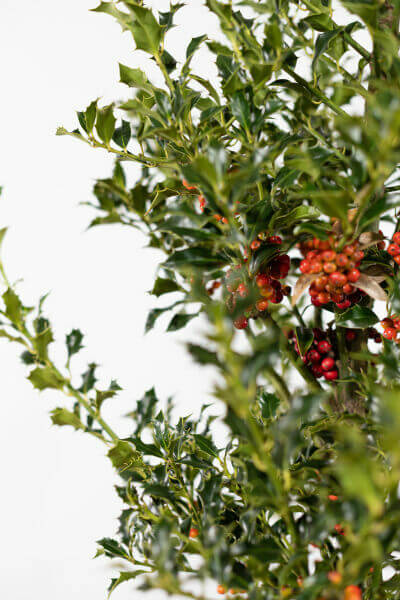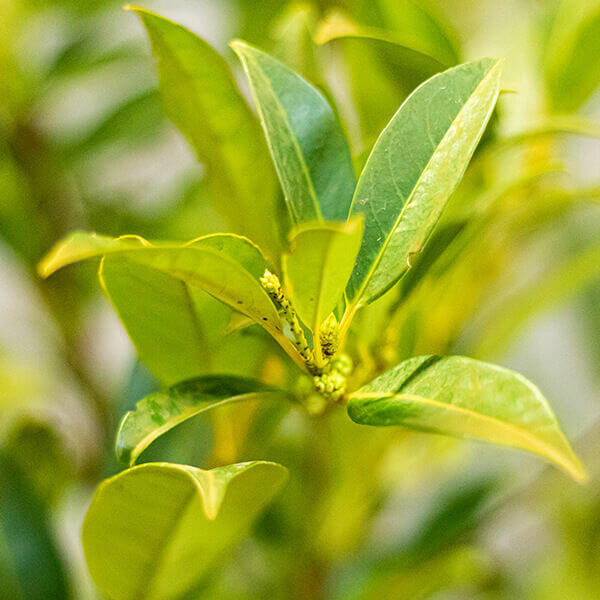Best Hedging Plants For Rooftop Gardens
Best Hedging Plants For Rooftop Gardens
Blog Article
Best Hedging Plants For Privacy Hedges
Improve your garden's allure with lush hedge ranges such as Yew (Taxus), Thuja, Laurel, Photinia, and Bamboo, commemorated for their structural stability and environmental advantages.
Yew and Thuja provide evergreen protection and winter strength, while Laurel offers fast growth and broad, aromatic leaves.
Photinia adds seasonal appeal with its dynamic red foliage, and Bamboo provides a low-maintenance, peaceful atmosphere.
These hedges enhance air quality, decrease sound, and create tranquil, private areas.
Correct planting, spacing, and maintenance guarantee energetic growth and eco-friendly harmony.
Explore how these rich ranges can raise your garden's beauty and well-being.
Key Takeaways
Change Your Garden With Lush Hedge Ranges
- Select Yew for its thick, evergreen development and unrivaled longevity.
- Select Laurel for its quick development and broad leaves, making sure quick privacy.
- Choose Photinia for its dynamic seasonal foliage, which turns a striking dark red.
- Make use of Bamboo for a low-maintenance, winter-hardy hedge with visual appeal.
- Area plants 2-3 per meter and prune frequently for ideal development and health.
Popular Hedge Plants
When changing a garden with lavish hedge ranges, it's necessary to consider popular hedge plants such as Yew, Thuja, Laurel, and Photinia due to their unique qualities and benefits.
Yew (Taxus) is extremely respected for its longevity and dense, green development, making it a prime option for enduring landscapes.
Thuja is noted for its evergreen foliage and robust winter season durability.
Photinia adds seasonal vibrancy with red leaves that darken in time, creating vibrant visual appeal.
Laurel provides fast growth and fragrant, broad leaves, suitable for quick privacy.
Furthermore, Bamboo is an excellent option for ambiance, offering a low-maintenance, winter-hardy option that improves the garden's visual with its sophisticated, swaying walking canes.
These choices accommodate a variety of horticultural needs and choices.
Benefits of Garden Hedges
Garden hedges use a wide variety of advantages, making them an important addition to any landscape. These natural barriers are cost-efficient to implement and offer substantial wind defense, boosting air blood circulation and contributing to noise reduction. The dense foliage of hedges like Thuja and Beech guarantees personal privacy by blocking exposure, producing a secluded and tranquil environment.
Hedges also play an important role in microclimate guideline, offering a steady environment that promotes plant development and reduces temperature changes. Their detailed leaf structures filter pollutants, improving air quality and contributing to a healthier garden community.
Furthermore, hedges excel in noise reduction, taking in and deflecting acoustic waves to lower ambient noise levels. This dual performance of providing both acoustic and visual personal privacy improves the general tranquility and aesthetic appeal of any garden.
Planting and Maintenance Tips
For a successful hedge, precise preparation of the planting area is important. Make sure the soil has proper pH and drainage to support strong root advancement.
Area the plants properly for the chosen species. Water the hedge frequently during its initial growth phase, changing as needed with seasonal modifications.
Implement a organized insect control and disease prevention technique, using chemical or natural treatments when essential. Frequently check for aphids, termites, and fungal infections.
Apply mulch to maintain wetness and suppress weeds. Seasonal pruning promotes thick growth and air circulation, vital for plant health.
Following these guidelines will help you cultivate a lively, well-kept hedge that enhances the appeal of your garden.
Spacing and Cutting Guidelines
Spacing and Trimming Standards
Correct spacing and cutting are vital for cultivating healthy, aesthetically appealing hedges. Adequate spacing ensures each plant receives sufficient nutrients, light, and airflow.
Follow these guidelines for optimal hedge upkeep:
- Spacing: Position hedge plants 2-3 plants per meter to motivate robust growth.
- Pruning Strategies: Routine pruning is important for maintaining wanted hedge height and shape. Cut new growth in summertime and cut back older wood during winter season.
- Seasonal Care: Change cutting approaches and schedules according to seasonal requirements to ensure plant health.
- Hedge Height: Routinely display and cut to keep the desired hedge height and achieve consistent aesthetic appeals.
Abiding by these steps will guarantee your hedge thrives, enhancing both the appeal and performance of your garden.
Picking the Right Hedge
Selecting the Right Hedge
Choosing the proper hedge involves examining aspects such as fully grown height, foliage density, and ecological strength. Successful hedge plant choice read more needs comprehending each types' development qualities and site-specific versatility.
For example, Yew (Taxus) uses outstanding longevity and dense growth, while Thuja is significant for its winter strength. Furthermore, thinking about maintenance requirements is crucial; fast-growing species like Laurel or Privet demand regular cutting, whereas low-maintenance alternatives like Bamboo or Ivy might be more effective for those looking for minimal upkeep.
Environmental aspects such as soil type, light availability, and wetness conditions should also assist the selection process. This cautious method guarantees the chosen hedges will prosper, supplying both functional and visual benefits to the garden landscape.
Shipment and Planting Recommendations
To guarantee your hedge plants prosper, they must be provided by specialized carriers and planted immediately upon arrival.
Follow these necessary actions for successful planting:
- Soil Preparation: Enrich the soil with organic matter to improve drain and nutrient material.
- Planting Depth: Create a trench two times the width and equal to the depth of the root ball.
- Watering Techniques: Water completely after planting, keeping the soil consistently damp however not filled.
- Mulching: Apply a layer of mulch to keep wetness and reduce weeds.
Customer Assistance and Service
Offered the crucial function of prompt assistance in horticultural pursuits, our client support group is readily available six days a week through telephone, email, and social networks to offer expert guidance and quickly attend to any issues. Their devotion to fast action times makes sure consumer fulfillment by resolving questions related to plant health, optimal planting methods, and upkeep schedules.

6 days a week
This thorough support group, reinforced by an outstanding 9.3/ 10 customer score, highlights our dedication to improving the gardening experience for every single customer.
Frequently Asked Questions
For How Long Does It Take for Hedge Plants to Establish?
Hedge plants normally require one to three years to become completely developed, with the specific duration differing by types and growing conditions.
Reliable care throughout this important duration is vital for robust development. Constant watering, watchful weed control, and suitable fertilizer application are pivotal in promoting strong root development.
For example, fast-growing types like Laurel might develop quicker, while slower-growing varieties such as Yew might take longer. Thorough upkeep accelerates the facility process, resulting in dense and healthy hedges.
What Are the very best Hedge Plants for Personal Privacy?
The question of the best hedge plants for privacy includes assessing evergreen and deciduous choices.
Evergreen hedges like Thuja, Laurel, and Cypress provide year-round protection, ensuring constant personal privacy.
In contrast, deciduous hedges such as Beech offer seasonal privacy, shedding leaves in colder months.
Secret maintenance suggestions for privacy hedges consist of regular trimming, fertilizing in spring, and correct spacing-- usually 2 to 3 plants per meter.
Additionally, constant watering and persistent weed removal are essential for promoting healthy, dense growth.
Can Hedge Plants Draw In Wildlife to My Garden?
Yes, hedge plants can draw in wildlife to your garden by providing vital benefits like shelter, food, and nesting websites, therefore enhancing regional biodiversity. Yew, holly, and laurel are exceptional for attracting birds, while ivy supports a variety of bugs.
However, it is necessary to note that there are some drawbacks, such as increased upkeep to handle bugs and regular maintenance. Thoroughly choosing and keeping hedge ranges can help balance these benefits and disadvantages, ultimately cultivating a lively and sustainable environment in your garden.
Are There Any Flowering Hedge Plants Available?
Yes, there are flowering hedge plants readily available that can improve the charm of your garden.
For instance, Elaeagnus, also called Olive Willow, produces aromatic white flowers in the fall, adding a touch of elegance.
Photinia, another popular choice, showcases vibrant red leaves that mature into a rich green, producing a vibrant visual result throughout the seasons.
To make sure these plants thrive, it's vital to practice appropriate pruning strategies and seasonal upkeep, such as cutting brand-new growth in the summertime and cutting back in the winter season.
These procedures will help keep the health and visual appeal of your flowering hedges.
How Do I Avoid Pests in My Hedge Plants?
To avoid bugs in hedge plants, utilize natural insect control approaches and maintain correct hedge care. Introduce advantageous insects like ladybugs, which take advantage of damaging bugs, to create a well balanced ecosystem.
Frequently examine your hedges for signs of invasion and quickly remove any affected parts to prevent the spread. Guarantee the health of your hedges by applying balanced fertilizers and supplying appropriate water.
Use mulching to maintain soil wetness and appropriate spacing to decrease plant stress and promote robust growth. These practices collectively help in reducing bug concerns and keeping a healthy hedge.
Conclusion
In essence, picking the best hedge varieties such as Yew, Thuja, and Laurel can transform any garden into a serene haven. These plants supply year-round plant, enhance aesthetic appeal, and deal practical benefits like sound reduction and wind security.
Proper planting methods, precise spacing, consistent watering, and seasonal cutting are crucial for optimum development.
Reputable shipment services and expert customer support ensure a seamless experience from purchase to planting, making it simpler than ever to raise your outside space.
Garden hedges provide a plethora of benefits, making them a valuable addition to any landscape. These natural barriers are affordable to carry out and offer substantial wind defense, enhancing air flow and contributing to sound decrease. The thick foliage of hedges like Thuja and Beech makes sure privacy by obstructing exposure, creating a secluded and peaceful environment.

Pruning Strategies: Routine pruning is necessary for preserving desired hedge height and shape. Cut brand-new growth in summertime and cut back older wood throughout winter season.
Report this page